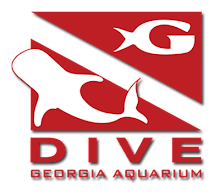
The Georgia Aquarium was recruited to assist in a National Science Foundation project conducted by the University at Buffalo and University of Miami.
Elliott Jessup, along with three other Georgia Aquarium biologists went down to Florida, where the University of Miami provided the vessel for the trip to the Bahamas. This was no vacation though, but was instead an interesting study on population dynamics.
The trip revolved around a study proposed by Doctor Howard Lasker of Buffalo and Professor Claire Paris of Miami on a Caribbean gorgonian species termed
Pseudopterogorgia elisabethae.

With a number of bottom dwelling organisms, part, if not most, of their lifecycles involve being sedentary. An obvious example of this are species of corals. While in the larval stage, individuals have the potential to be carried out of a population via currents. Population numbers depend on recruitment, or additions to the population. These additions can be either from reproduction by the local population or from migration of individuals from other populations. Thus a population is defined in degrees of being closed (recruits from the local population) or open (recruits gained from migration from outside populations). This becomes an issue especially in conservation of a species, as the genetic diversity and size of a population is dictated by recruitment. If a population is open and relies on recruitment from outside populations, then just conserving the focus population would not be enough to keep the size relatively stable.

Harvested populations of
P. elisabethae were studied in order to collect data to find what degree the populations were closed.

Transects were laid and samples were taken


Lab work was done on the fully equipped boat.
Some of the locals dropped by to see what the divers were doing



No comments:
Post a Comment